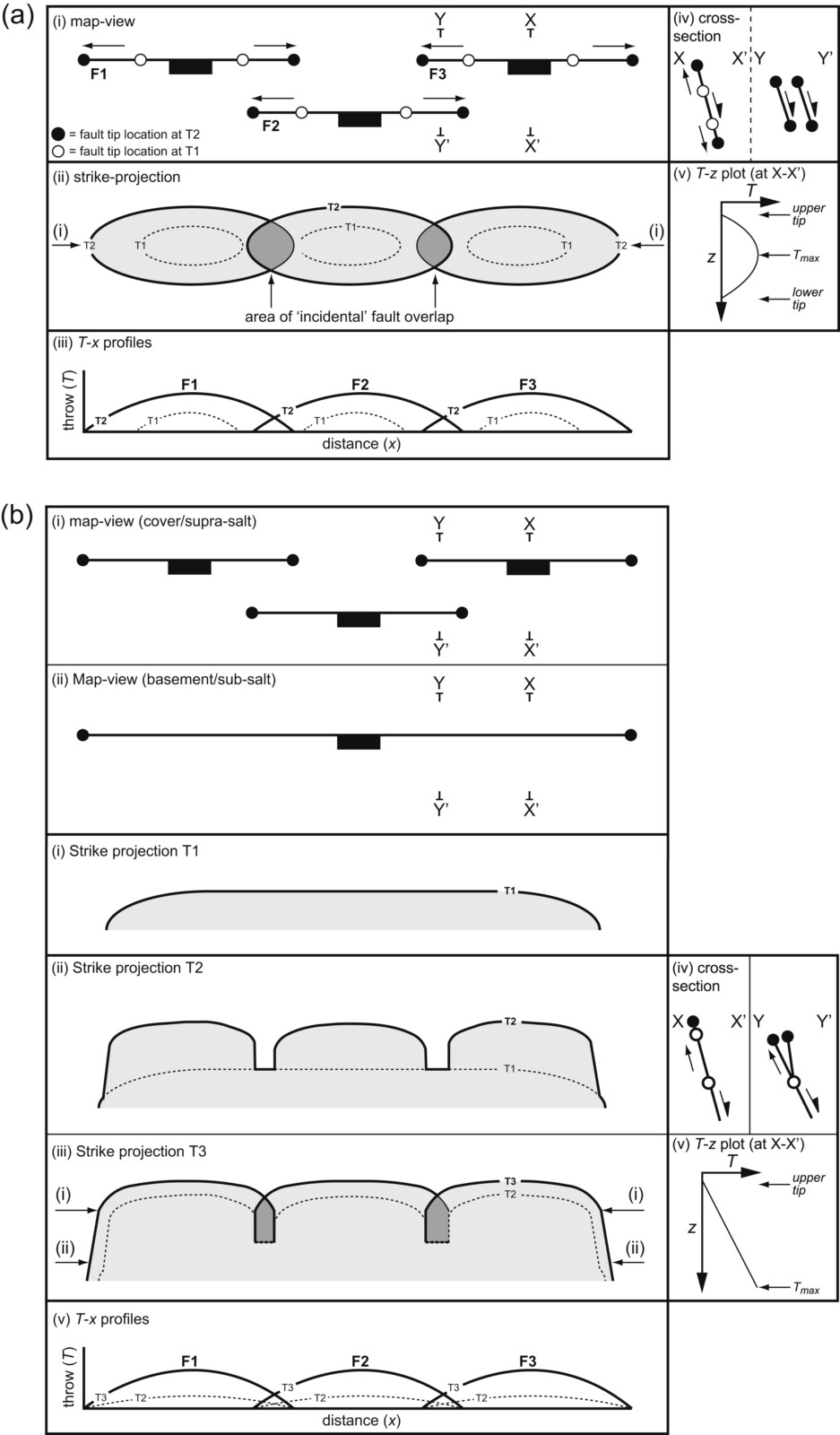
In this Must Read paper “3D seismic analysis of the structure and evolution of a salt-influenced normal fault zone: a test of competing fault growth models (2013)”, by Christopher A-L. Jackson and Atle Rotevatn used detailed 3D seismic reflection data from the Suez Rift, Egypt, to gain a better understanding of the structural evolution of normal faults. Specifically, the paper shows that isolated and coherent fault growth models occur simultaneously during the growth and linkage of normal fault segments across a salt unit.
Two models are typically used to conceptualize normal fault growth: the ‘isolated fault model’, which predicts incremental fault lengthening with slip, and the ‘coherent fault model’, which supports rapid lengthening followed by displacement accrual. Through the analysis of the structure and evolution of the October Fault Zone, in the Suez Rift, this must-read paper supports a novel view: a hybrid fault growth where both models play a role, with coherent fault growth at depth and isolated fault growth above the salt.
The faults above the salt, named supra-salt faults, are initially decoupled from faults below the salt, named sub-salt faults. The seismic images show that the supra-salt faults attained a rapid lengthening, and then accumulated displacement predominantly downwards. The study of fault throws, growth strata and relay ramps, support that the early growth of supra-salt fault segments can be defined by the isolated fault model, and that a transition to a behavior reminiscent of the coherent model emerges as these segments mature and grow downwards (Figure). The study thus provides a more nuanced understanding of fault kinematics, that highlights the potential for simultaneous contributions from both models in shaping a single fault’s life cycle.
The study also highlights the role of mechanical stratigraphy in controlling fault growth and geometry. The stratified (mechanically-layered) composition of the supra-salt sequence acted as a barrier to the upward growth of the sub-salt faults, leading to the formation of separate, isolated fault segments above the salt layer. Following the initial rapid growth of fault segments in sub-salt strong layers, faults lengthened quickly in supra-salt softer layers, but connection between the fault systems was impeded by the mechanically-weak salt layer. Finally, continued displacement along the above-salt faults over time transected the salt layer, linking them with the underlying fault system.

Figure. A schematic illustration of the coherent fault model, modified to highlight the role of salt and dip-linkage in fault growth. The figure presents fault growth of the cover and basement faults in three evolutionary stages (a, b, c): (a) Initial stage: Incipient isolated fault segments in cover (F1, F2, F3) and single, well-developed fault in the basement. (b) Intermediate stage: Fault growth of cover faults developing relay zones between fault segments, and growth of basement fault. (c) Advanced stage: Mature fault system with (cover and basement) faults partially linked. Each stage includes cross-sections (X-X’) and T-z plots showing fault geometry and displacement variation with depth. T-x profiles in (b) and (c) illustrate throw variation along strike, highlighting fault segmentation and linkage in time.
These findings challenged the notion that isolated and coherent fault growth models are mutually exclusive, and set the precedent for future studies, like those by the authors themselves, aiming to understand the processes governing fault growth in diverse tectono-stratigraphic settings (e.g., Rotevatn et al., 2019). This research also underscores the need for dynamic and three-dimensional perspectives in geological studies. Such insights are crucial for comprehensively assessing geological hazards and understanding basin evolution in petroleum geology.
David Fernández-Blanco and the TS Must Read team
References
Jackson, C. A. L., & Rotevatn, A. (2013). 3D seismic analysis of the structure and evolution of a salt-influenced normal fault zone: a test of competing fault growth models. Journal of Structural Geology, 54, 215-234. https://doi.org/10.1016/j.jsg.2013.06.012
Rotevatn, A., Jackson, C. A. L., Tvedt, A. B., Bell, R. E., & Blækkan, I. (2019). How do normal faults grow?. Journal of Structural Geology, 125, 174-184. https://doi.org/10.1016/j.jsg.2018.08.005

